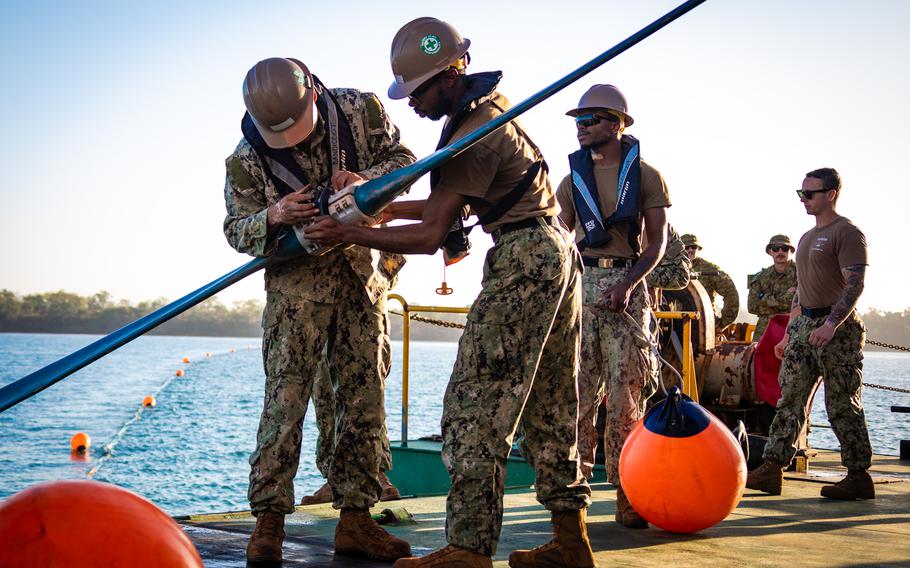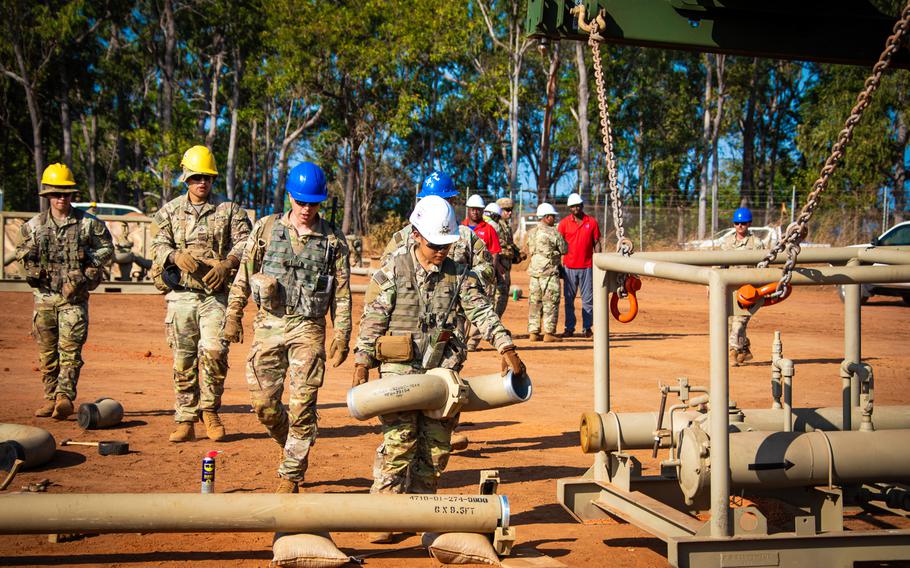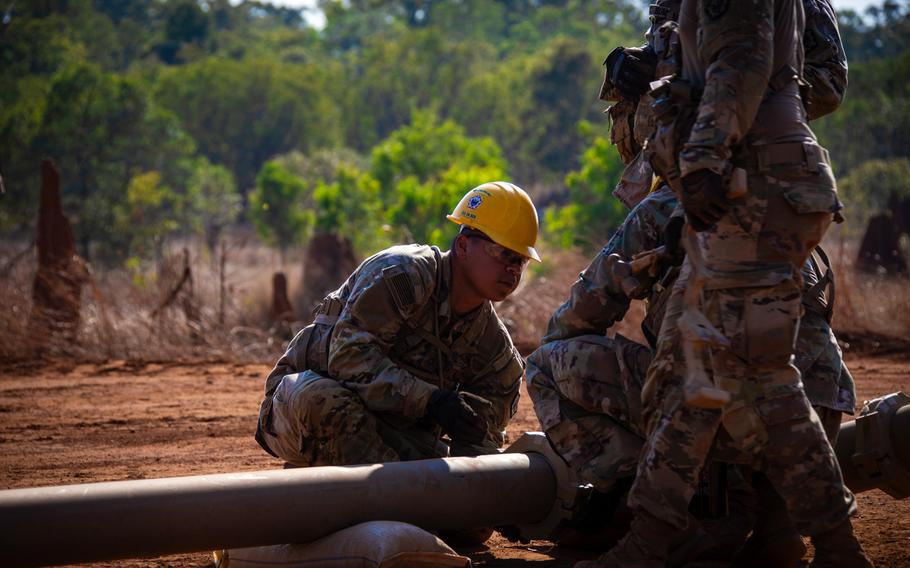
U.S. sailors assigned to Amphibious Construction Battalion 1 work to affix a buoy connector aboard an Australian vessel during a ship-to-shore fuel pipeline exercise in Weipa, Australia, July 21, 2023. The event was part of Talisman Sabre. (Jonathon Daniell/ U.S. Army)
BOWEN, Australia — The U.S. Army and Navy recently moved more than 50,000 gallons of water from a commercial ship to storage tanks on an Australian shore, the first successful test of a joint fuel pipeline by the two services.
Facing off against uncertain weather and sea conditions, and with mismatched equipment, sailors and soldiers on Sunday pumped the water more than 3 miles from the Australian commercial vessel Bandicoot to a staging ground on the beach near Weipa in northeastern Australia.
For the trial, water provided a stand-in for fuel that would be pumped in real-world circumstances.

U.S. soldiers connect a fuel pipeline to a pump station during the Talisman Sabre exercise in Weipa, Australia, July 20, 2023. (Jonathon Daniell/ U.S. Army)
The project — joint petroleum over the shore — was one of the first events of Talisman Sabre, which kicked off in Australia on July 21. The biennial military exercise this year brings together the militaries of 13 nations and more than 30,000 personnel.
The U.S. Army and Navy have each completed similar projects, but the recent pipeline test was a significant accomplishment for the two services, according to Navy Lt. Dylan Christianson, one of the officers in charge of the project.
“You know, there were definitely hitches, but we were able to finish it successfully,” he told Stars and Stripes on Thursday. “Everything executed pretty much to plan, but it’s just a huge coordination effort.”
The pipeline is a key component of “logistics over-the-shore” strategies used by both services, which allow the supply of fuel, water, vehicles and other equipment on beaches that have no other means of access. This could include areas with no existing ports or damaged facilities during humanitarian missions, or enemy territory secured during military operations.

U.S. Army Pfc. Martine Flores, a vertical construction engineer with 555 Engineer Brigade, helps connect two pipes during a ship-to-shore fuel pipeline exercise in Weipa, Australia, July 20, 2023. The training was part of Talisman Sabre. (Jonathon Daniell/ U.S. Army)
Finding ways to connect Army pipes and equipment with their Navy equivalent proved difficult — engineers at one stage had to learn how to operate an Army pump, he said. At another stage, soldiers and sailors stood in the ocean and manhandled the hose for nearly six hours.
“If we had a different crew, I don’t know that it would have gone as well, if we would have been successful,” Christianson said.
The Navy is also using the recent operation to explore other uses for the pipeline.
“This method that we’ve come up with has way faster deployment speeds than the traditional method, and it gives us access to deploy it as a pump for a day and then get out of there,” Christianson said. “Whereas the normal method, you can leave it for 30 days and someone could just come by, hook up and pump fuel or water.”